Having grown up amongst the agave fields of Jalisco and with decades of experience working with tequila, Miguel Cedeño Cruz has made a tremendous impact on the industry and the tequila movement. Now, as the Master Distiller of Tequila Cenote, he is set to put his mark on this astounding range of tequilas. We sat down with him to learn more about his story, his work in supporting tequila, and his vision for what’s to come.
What Led You Into a Career Working with Agave?
I am a native of Jalisco and my mother’s side of the family has a good relation with the agave and tequila industry. My great grandmother had big fields of agave in and around the region. And one of the previous governors of the state of Jalisco was my great uncle, Francisco Medina Ascencio. But in the first ten years of my career, I was actually a mad scientist in biotechnology. I had decided to work toward a Masters in Biotechnology and moved to Merida, Mexico, invited with one of my friends that I had studied at the same time the master program.
So, we moved into Merida to start a new biotech center, and it took me 10 years to establish the foundations of the program, the building, the library, and the contracting of all of the professors. I was, in fact, one of the professors of the program, and also received all of the equipment and started new projects linked with the industry focused on another type of agave called “Henequen”, which was used mainly for fiber. At one time, they tried to produce tequila, but it didn't work for many reasons. Following that work, I was invited to take a sabbatical year in a Jalisco R&D center in biotech and my main reason for being there was to help companies in terms of improving the process, and I was invited to give support to the tequila industry.
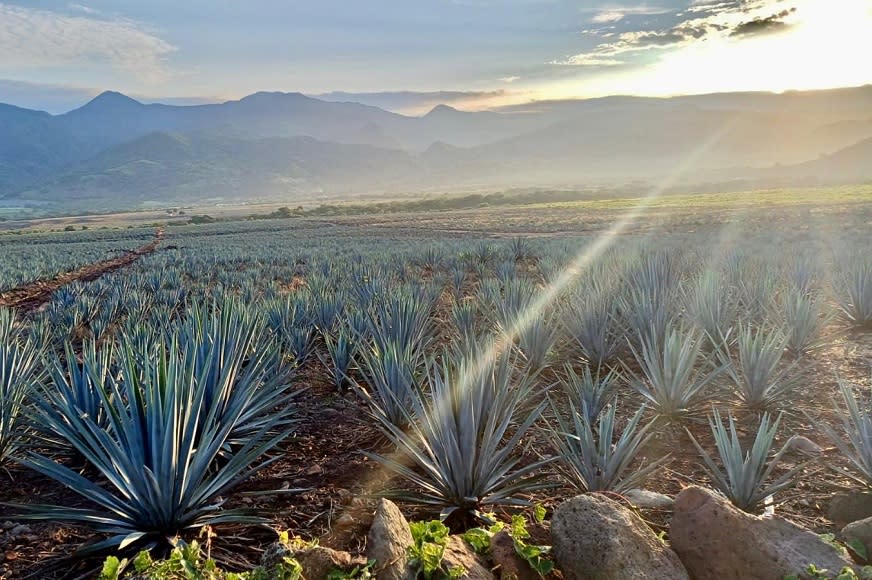
How Did this Transition into Tequila Specifically?
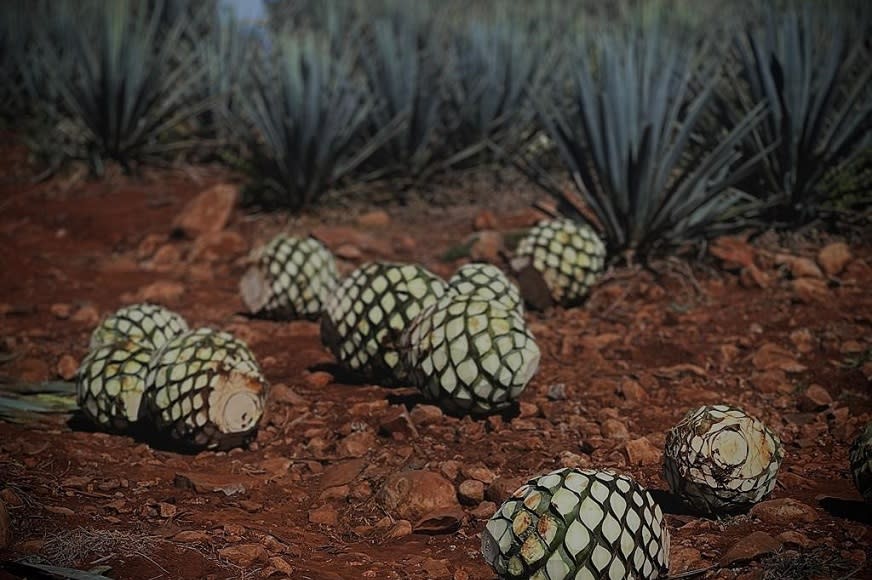
One company that I developed improved processes for, needed support modifying their fermentation process, because it was my speciality. They were really impressed by that work and confessed to me that they were losing a lot of money – I completely changed the process. And so, they invited me to stay there, and I received an invitation to continue working with them. At the beginning, I said, “No, I am in a sabbatical year, and I need to return to Merida. I was married here and have a wife that is native of this area, and I have three girls, two of which were born in Merida, with the youngest born in Jalisco.” But we figured it all out, and I accepted the invitation, and that was my first contact with tequila.
And that was 36 years ago that I entered into the tequila business because I received that one first invitation, and it was great. That finalized my 10 years with the biotech center, but not totally because I was involved with teaching in a masters program in Jalisco and with a master program for the University of Guadalajara, Universidad Autónoma de Guadalajara. I continue to serve as a guest professor for that program, and I maintained contact with most of the companies from previous. In fact, after that, I founded my own consultant company for the agave and tequila industry to give support to many companies. I was able to work for very big companies in Mexico, Brown-Forman, Herradura, Gonzalez, Diageo and other big companies.
When Did Your Work with Tequila Cenote Begin?
After all of that work, I received an invitation from Stoli Group, the company that owns Cenote tequila. And I was really curious about how some natural beauties in Yucatan could inspire the direction, design and name of a brand. I used to dive in some of the cenotes, sometimes just only by snorkeling because there are some that are very dangerous.
I wondered how this company could have a brand with the name of Cenote and develop a natural connection to something I fell in love with, especially in the Yucatan Peninsula when there was no relationship with tequila. But of course, it was the purity and the freshness of the environment, together with the beauty of the cenotes that was captured by these founders of the company.
They put it in beautiful bottles, and they related that wonder of Mexico with all the other beauties and traditions that are producing tequila. I was captured by the company and their vision. Immediately, I accepted to be the Master Distiller of Tequila Cenote. And I am really proud of this work, and am honored to be part of this company.

What Made Cenote Stand Out to You?
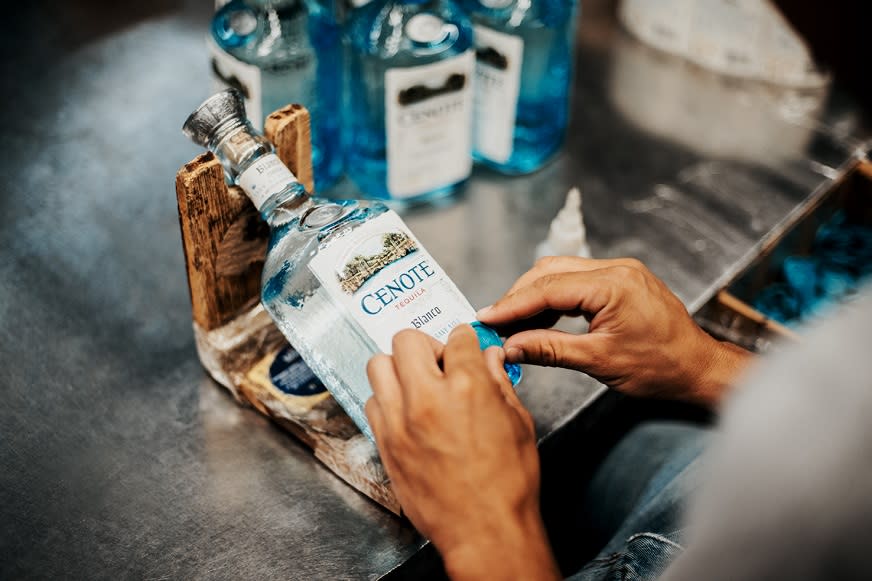
This company celebrates two worlds: the modern tequila traditions and the Mayan world. This is the only company to have that link with the Mayan culture. In fact, some of the bottles have some of these symbols that are Mayan glyphs to connect different worlds and their many icons. These are very iconic bottles in their own right.
Also, pay attention to the color of each of these bottles – there’s the beauty of the blue representing the pristine waters of cenotes for the blanco. That’s contrasted with the dark and stoic black for Ahumado.
These are each very beautiful bottles that give you a nice first impression of the tasting experience you are about to have. All of these are hand filled and labeled because we need to be very careful with every detail. And all the bottles need to be maintained in a very pristine condition without the fingerprints. All of this is just the final reflection of the liquid that is inside. Because you can certainly have a very beautiful bottle, but if it doesn’t reflect the quality of what is inside, it’s a miss. But rest assured, in these bottles, you have a very good tequila.
What were Some Ways That You Worked to Move Tequila Forward?
Part of my responsibilities were to collaborate with the many companies in this industry and also with the Tequila Chamber. The National Tequila Chamber is an organization that joins together all of the tequila companies to protect the commercial interests of our industry in the world. This is one organization that I worked for some years in order to travel to different countries in the world, promoting, in general, the category of tequila, not focused on any particular brand. I also participate in another important entity, Consejo Regulador del Tequila (CRT) – you may know it as the TRC or Tequila Regulatory Council (TRC). The main objective for the CRT is to certify and verify all the brands of tequila beginning from the agave to the end product.
That was my entrance into the agave world, and because of my status as a professor, I had access to research and investigate processes in the industry. And to this day, I always keep reading about what is new and who is behind new innovations. One area of focus now is in the area of sustainability. This is another thing that captured my attention with the invitation of Stoli Group, because it's a company that also is very concerned about protecting the environment. In fact, we use the fiber to compose and recycle to the fields in order to restore some of the nutrients. And we have installed solar cells on the roof of the distillery in order to generate energy, and reduce the carbon fingerprint as well as the water impact.
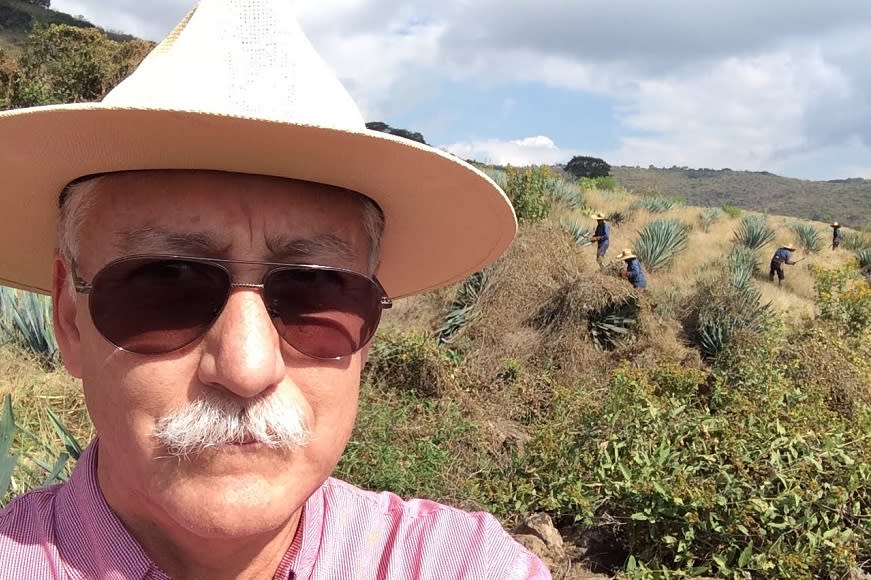
Are There any Specific Processes or Approaches at Cenote that are Unique to the Brand?
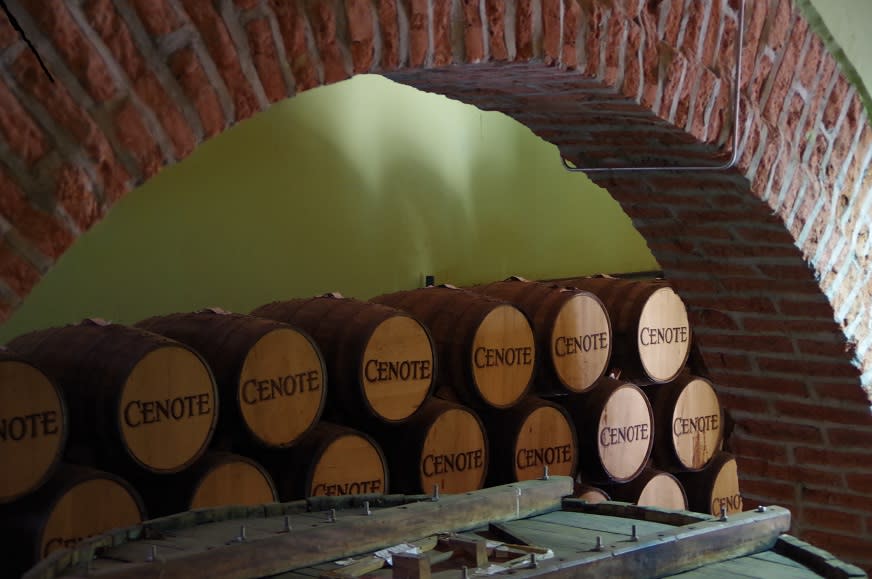
There are some – one of the things that is really important is water. If you take a bottle of tequila that is typically at 80-proof, it's 40% alcohol and the remaining 60% is water. It's critically important, not only because of the quality of the water at that stage, but this water could also affect the fermentation process. So you need to be very careful to use very good water. The tequila region is a volcanic area, and our distillery is actually the closest distillery to the volcano. The volcano is not active anymore, but because of its makeup, all of the water is filtered through the volcanic soil and brought up through a very deep well.
But this water is not only extracted from the deep wells filtered by volcanic soil – it also receives a different type of purification. We filter our water through charcoal on a bed of silver. It’s a real curiosity. This system is also used in the space shuttles and the space station for the purification of water using charcoal with silver. It’s my understanding that we are the only one that uses this type of system in order to purify the water for Cenote, because we believe that good tequila starts with good water. So, we use these systems to remove some of the excess of minerals that are in the soil in order to have the right balance. Then for bottling, and only for bottling, we use a reverse osmosis system in order to have a very pure water that can be used in diluting the tequila to achieve the final proof that is normally 40% of alcohol.
Another important process that very few companies use is that all products are barrel-aged. Even the Blanco spends three weeks in barrels which gives to you a different smoothness and sensation than other blancos that you may have. I believe that in order to prepare a good reposado, añejo or even an extra añejo or all tequilas, you need to have a very good Blanco, and our Blanco is really a great product.
What Makes Your Approach to Cultivating Agave Unique?
Agave is the plant that we use for tequila, specifically Agave Tequilana (also known as blue Weber agave) is the only one that we can use. But it’s not only the type that’s important – it needs to be grown in a special area that is called an origin denomination area. Even if land outside of this area is available for growing, for instance you can grow it in a cave in Yucatan, and in other areas, you cannot use it outside that region.
And why? Because you must demonstrate not only the technical capabilities to grow agave and produce tequila. You must satisfy all aspects of this evaluation process including documenting all the technical capabilities, and only using the agave grown in that area. And behind these standards is dedicated work. You need to start very early.
You need to go to the fields, take a look at the agave in the morning, and all the variety of plants growing together, and all the fauna that are there, like scorpions, snakes and everything, and you need to protect it all. In fact, we are one of the companies that has an ARA certification, which represents our responsibility not to deforest any land to produce agave and maintain sustainable practices. We were one of the first to receive a certification in our Agave field for being responsible for not deforesting the land.
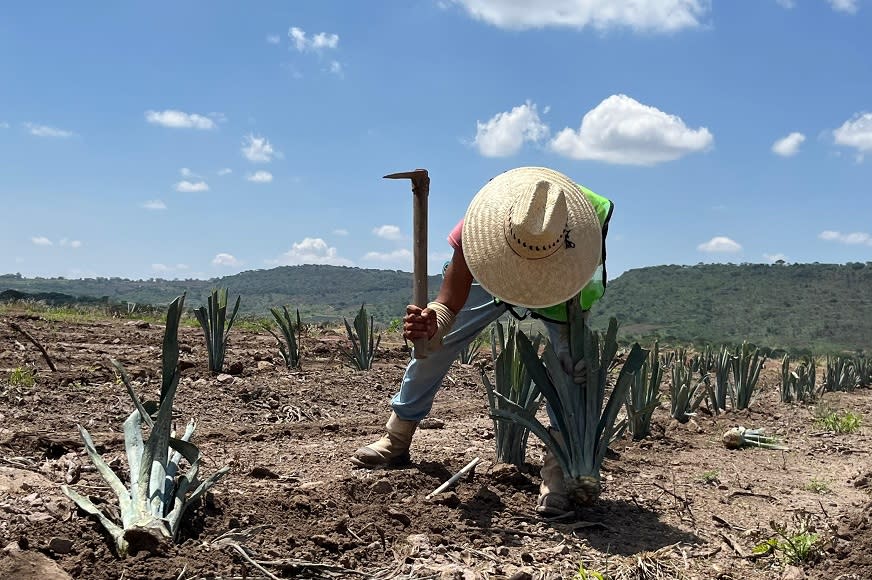
What Does it Mean to be able to Collaborate with Your Counterparts and Share in the Industry?
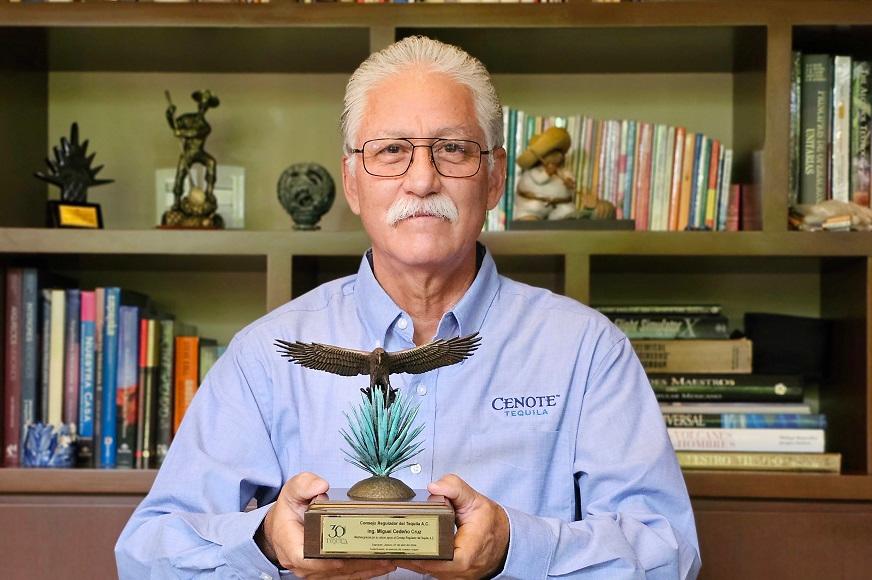
The industry has changed a lot since I finished my masters program, because I remember many years ago, 35 years ago, that the industry was very closed off. You could not have conversations with your counterparts, because you might be fired from your company – those were your competitors. But the times have changed, and this is part of the success of the industry today. We still believe, of course, that we are competitors in the market, and on the shelves, with the brands we are offering these products to our consumers. In the end, those consumers are going to be the judges on which is a good tequila for them. We are all different consumers, and we love different types of tequilas, and we need to capture our consumers.
We understood that the tequila industry as a whole needs to be protected. If somebody has a problem, we need to share that information in order to ensure that others do not have the same problem. For example, a company had a problem with heavy metals in the water. So we found a way to eliminate that using resins that were approved for using the food industry, and in that process, we developed a new technology. We share those learnings because we don't want some company to have a problem, because it may result in the consumer believing that it’s not just that brand but a broader issue with tequila – then we all have a problem. So we understood that we need to protect the virtues of tequila and it's also part of the responsibility of the CRT. So our team participates in the masters program, in the diploma programs, and not only in the operations, but also in the agave production. There is also a program to improve all the technical information for everyone in the industry. So we share everything, “Use this. Don't use that, because you can have a problem in the agave fields.”
Personally, I have also actively shared within the industry also through writing. I have published some books and chapters, and have also participated in a number of books by other writers. Every year I also support various conferences as a speaker in order to teach and educate the industry. Ultimately, the answer is to protect the industry. We need to innovate together and grow as a whole in order to capture the attention and interest of the new generations.
If You're New to Cenote Tequila, Where Should You Start?
For someone that is just starting with Tequila Cenote, I recommend starting with the Blanco, because it is a very good Blanco that has different accolades and prizes that have been won in different competitions. You need to first taste the Blanco, because it gives you the full range of notes in your nose and in your mouth. In your palate, you’ll perceive all the soft smoothness, the deepness and how persistent the aromas and flavors are – once you sip that, it stays in your mouth for a long period of time. This deepness of the product represents all of the aromas and the flavor that are persistent, and our balance is more rounded – it’s not a peak that you can feel very easily, like the citrus and nothing else or the alcohol and that’s it. We want you to perceive all the complexity and do that while sipping on the tequila.
I also recommend that you do this during the day. Try it the first time to experience all the aromas and the flavors. Then let the glass sit there, cover it, and then return back for a moment an hour, and do the same and discover new aromas and flavors. Experience how this product and the flavors evolve. Once you have fully enjoyed the blanco, then start growing in complexity when you move into reposado. For a reposado, there is a standard of identity that gives to you the time for the minimum two months. For Tequila Cenote, we give more than that: three, four or more months, depending on the aromas and flavors. Because the barrels are used several times, we maintain a standard for flavor – not just having a legal requirement to reach. By doing this, we are able to give you the same product in every single bottle that you receive. And inside of that bottle, you will experience the complexity of the oak, the vanilla, all the flavors that come from toasting the American Oak ex-bourbon barrels. This continues all the more in the añejo, which is aged more than a year.
For the Ahumado, we use the very ancient way for cooking using stones much like the Mezcal industry. By cooking the agave with wood, the smoke that is generated from the wood is captured by the agave. Then we put it through a specialized fermentation and distillation process that we have in order to capture some of the essence of the smokiness while making sure it is not too intense. I love this Ahumado because it has a moderate smokiness, and if you can prepare a margarita with Cenote Ahumado, it's going to be very different because you’ll easily perceive that smokiness.
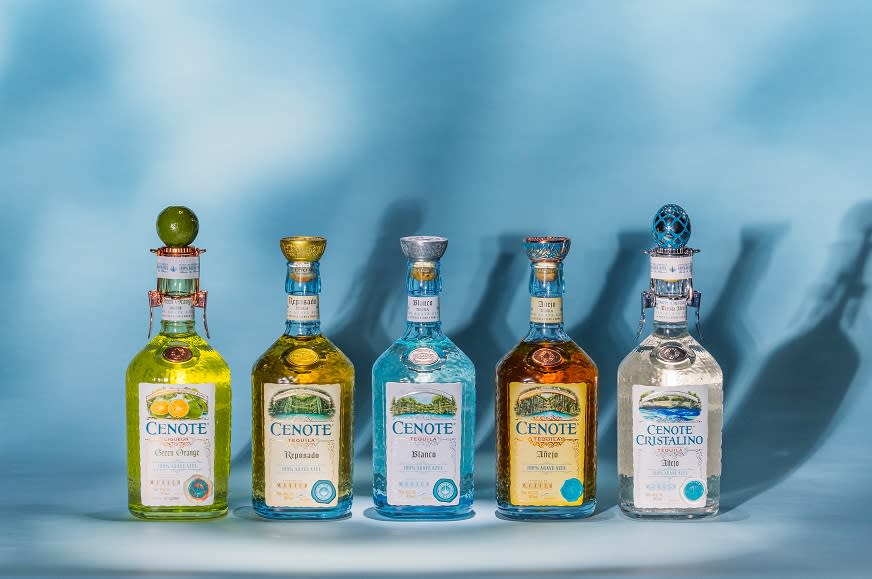
How do You Enjoy Drinking Tequila Cenote?
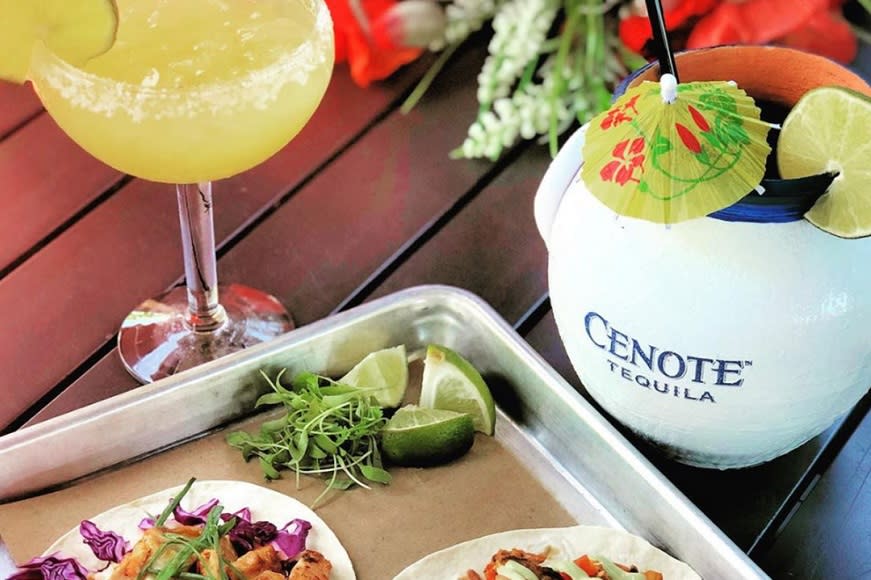
Enjoying tequila with friends and family is all about how you are hosting them. If I am preparing for a party in Merida, of course, I'm going to prepare everything. For the food, I am going to prepare cochinita pibil, a very typical dish that we have here that is made with pork, but is prepared in a very different way. Because it is warm here in the summer with temperatures of more than 40 to 42 degrees Celsius outside, I'm going to prepare some cocktails using Tequila Cenote Blanco. First, I'm going to look to prepare some margaritas, tequila sunrises and other types of cocktails. But I’m also going to experiment with local ingredients. And of course, someone can probably sip the blanco as well.
Then we are going to the table to enjoy all of the tapas or the botanas snacks that we prepare with the food. And we start moving into Cenote Reposado. We would prepare cocktails with the reposado, probably with juices or local ingredients, but also some straight sipping in special glasses in order to see and together with the cochinita pibil. At this point, you could also recommend the Cenote Añejo as a type of aperitif during the meal, and at the end. Of course, when we finish the food, with all the vegetables and everything that is around the cochinita and the chili habanero that was very spicy, and the purple onion that we have, it’s time for dessert.
My wife would prepare a very good chocolate that we call here the Potch chocolate dessert – a very unique, very soft, very sweet and very nice dessert. And with it, I offer them the Cenote Extra Añejo Sac Actun. That is a 10 year old tequila that is unique and matches perfectly with the chocolate. You would want to take a small piece of the chocolate cake, sip a little of the extra añejo, and chew the chocolate cake with the Sac Actun Extra Añejo. Oh, my God, this is incredible. Then you try it with espresso, and here we start innovating and creating. And of course, all of this is over the course of hours, so we can ensure responsible consumption.
Do You Have any Closing Thoughts Before We Go?
One recommendation that I have for anyone reading this is “experiment”. Don’t be afraid to experiment with Tequila Cenote. Try using your local ingredients that you have, but also learn by visiting our site to learn from that. And also, if you have the opportunity to come to Mexico for Tequila Cenote – because when you are enjoying tequila, you are drinking generations of our culture in. In the past, even when past inhabitants did not have the knowledge of distillation, they used agave, and they considered it a sacred plant. In fact, they gave the name of Mayahuel as the Goddess for the agave. Because gifts, food, robes, medicine, fiber, and so many good things came from what they considered a sacred plant.
So you are drinking the culture. And you are drinking the effort of seven years of taking care of the agave every single day to ensure they are not damaged by insects, plagues, diseases, and nature. You need to put fertilizer in order to have very healthy big agaves. And after that seven years, and if you want to drink Sac Actun (10 years), or an añejo (1 year), extra añejo (3 years), you are sipping something that requires at least 7 - 8 - 10 - 20 years ago. You might have been a kid at that time. And when you come to Mexico and see how we take care of the agave and the harvest, all the people do the harvesting, and you are immersed in the culture of the tequila.

